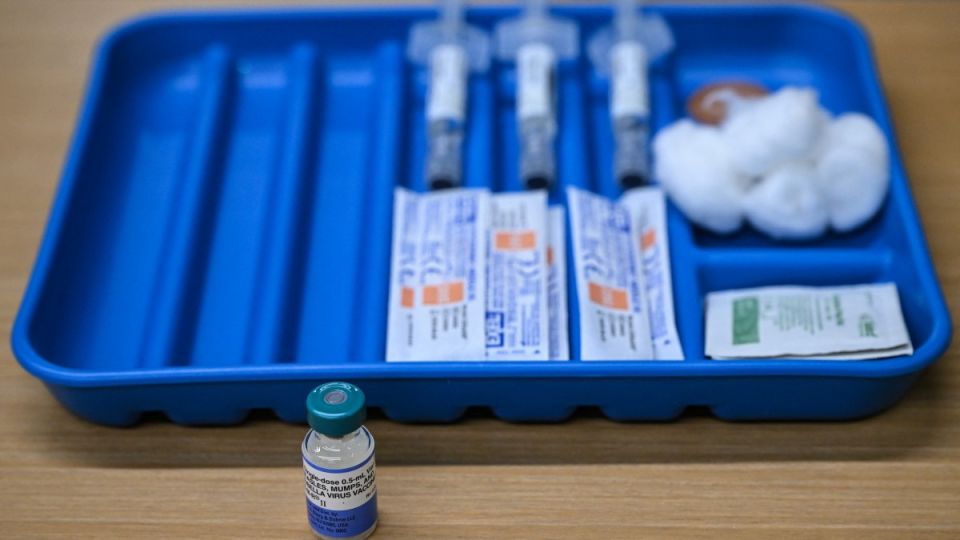May 30, 2025
MANILA – The World Health Organization (WHO) has warned that vaccine-preventable diseases are seeing a “dangerous comeback” in countries in the East Asia and Pacific, including the Philippines, with measles cases reaching its peak in the region since the onset of the Covid-19 pandemic.
The WHO Western Pacific reported on Wednesday that countries, such as the Philippines, Cambodia, Mongolia and Vietnam have reported a sharp rise in measles cases compared with the same period last year, signalling that far too many children are missing out on life-saving vaccines.
Measles cases across the region are now at their highest level since 2020, based on WHO data.
According to the Department of Health (DOH) data released on Wednesday, a total of 2,068 measles cases and 50 rubella cases were recorded from Jan. 1 to May 10 — an 8-percent increase from the same period last year.
The top five regions with the most measles-rubella (MR) cases were National Capital Region (642), Calabarzon (289), Mimaropa (148), Central Luzon (146), and Zamboanga Peninsula (137).
The case fatality rate (CFR) of the same period was at 0.42 percent, a slight decrease from the CFR of 0.46 percent last year.
In the Bangsamoro Autonomous Region in Muslim Mindanao (BARMM), which experienced a measles outbreak last year, only 121 cases are reported — a massive 90-percent decrease from the 1,179 MR cases recorded in the same period in 2024.
“Last year, President Marcos told me to solve the measles outbreak in BARMM. With the strong cooperation of our Bangsamoro brothers and sisters, we vaccinated 1,203,497 individuals as part of a Measles Outbreak Response Immunization (MORI). This kind of vaccination effort is what we must do, on a routine basis,” Health Secretary Teodoro Herbosa said in a separate statement.
READ: DOH says measles-rubella cases in PH up by 8% as of May 2025
‘Wake-up call’
Based on epidemiological data from the DOH, the country’s cases of measles-rubella are on an uptrend, following a three-year dip in cases when they breached 50,000 in 2019.
“The alarming rise in measles cases is a wake-up call,” WHO regional director for Western Pacific Dr. Saia Ma’u Piukala said in a statement.
“It highlights the vulnerable children who are being left behind — those who haven’t received even a single dose of vaccine, living in underserved communities, missed by routine immunization and vaccination campaigns. This underscores the critical importance of ensuring every child is immunized to protect their health and that of our communities,” he added.
“We’re not just seeing a spike in disease, we’re seeing a signal that the systems meant to protect children are faltering,” United Nations Children’s Fund (Unicef) regional director for East Asia and the Pacific June Kunugi said.
“Measles … [is] highly infectious, and children are paying the price for gaps in coverage, delayed care, and misinformation. No child should suffer or die from a disease we know how to prevent,” she added.
The findings of the WHO came a month after countries around the globe observed World Immunization Week, when the DOH supposedly conducted massive vaccination drives, especially for children aged 0 to 12 months.
Under the DOH National Immunization Program, the government provides vaccine for free for children to prevent 12 fatal diseases namely tuberculosis, polio, diphtheria, tetanus, pertussis, hepatitis B, Haemophilus influenzae type B, measles, rubella, rotavirus and Japanese encephalitis, and human papilloma virus (HPV).
Only 67% fully vaccinated
As of February data from the DOH, out of the 2.4 million children younger than 1 year old, only 64.85 percent or around 1.55 million have been fully immunized — way below the target of 95 percent to achieve herd immunity, preventing the transmission of diseases even to the remaining unvaccinated part of the population.
“Routine vaccination should be done faster, higher, stronger, and together,” Herbosa said.
“We have more proof that the DOH can do it. When President Marcos told me to contain the pertussis outbreak in 2024, intensified nationwide vaccination brought the numbers down,” he recalled.
For the same period of Jan. 1 to May 10, the DOH recorded only 200 pertussis cases nationwide, 15 times less than the 2,968 cases in 2024, when outbreaks in different parts of the country were reported.
The DOH continues to strengthen its Routine Immunization program through catch-up vaccination and school-based vaccination programs. The “Bakuna BayaniJuan: Big Catch-up Immunization” program, launched in the National Capital Region from Nov. 17 to Dec. 16, 2024, successfully vaccinated 1,753,950 individuals.
Additionally, the school-based immunization program has reached 3.8 million students nationwide.
Similar efforts are underway in 2025, the DOH said.


